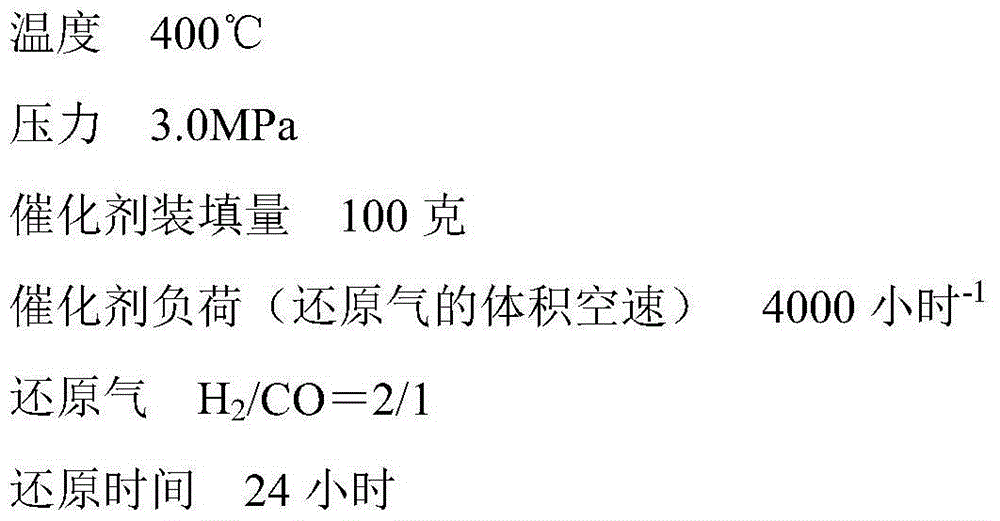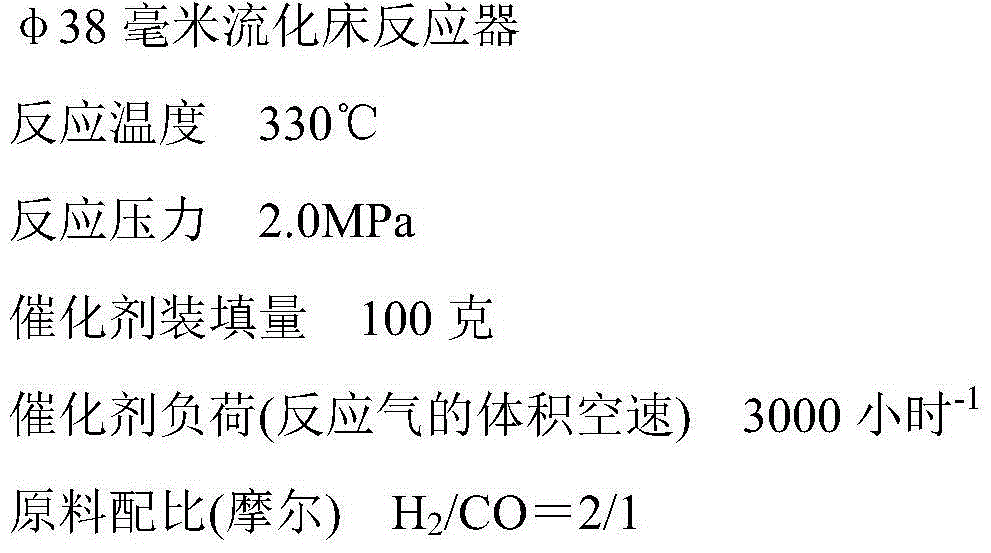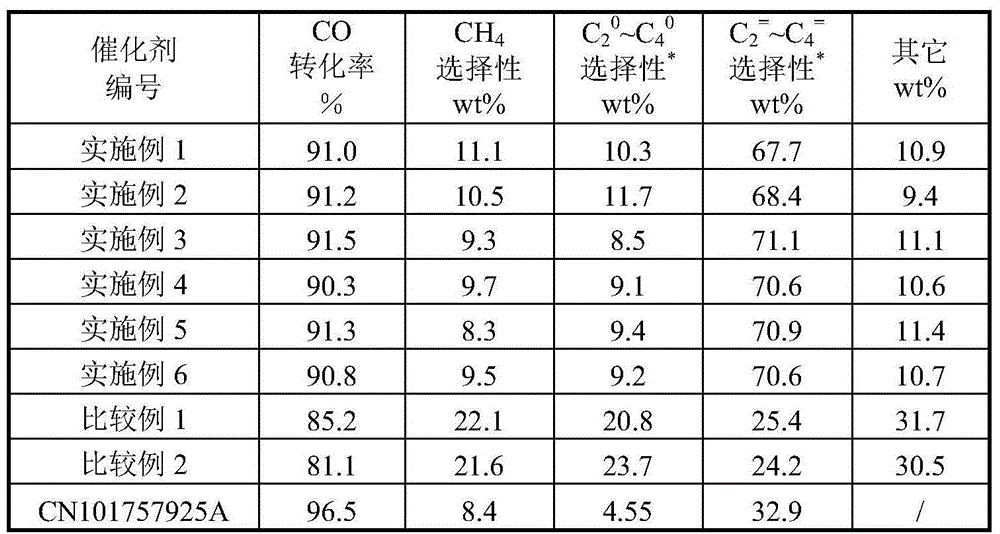A microsphere catalyst for preparing lower hydrocarbons from synthetic gas and a preparing method of the catalyst
A technology for synthesis gas and low-carbon hydrocarbons, applied in catalyst activation/preparation, chemical instruments and methods, physical/chemical process catalysts, etc., can solve problems such as catalyst deactivation, easy overheating, and insufficient concentration of products, and achieve optimal Catalytic effect, good technical effect, effect of improving activity
- Summary
- Abstract
- Description
- Claims
- Application Information
AI Technical Summary
Problems solved by technology
Method used
Image
Examples
Embodiment 1
[0065] Take 612.0 grams of ferric nitrate and 22.53 grams of zinc nitrate in the same container, add 1000g of water to dissolve, obtain material I, take 0.4 grams of lanthanum nitrate and add 10g of water to dissolve, obtain material II, take 0.15 grams of chromium trioxide, add 100g of water, Stir and dissolve to obtain material III.
[0066] Mix materials I, II, and III, add 312.5 grams of 40% by weight aluminum sol material under stirring, then add 50 g of a solution containing 0.1 gram of KOH, adjust the pH value of the above slurry with ammonia water to make the pH of the mixed slurry = 6.0 After fully stirring, the prepared slurry is subjected to microsphere formation in a spray dryer according to the usual method, and finally in a rotary roaster with an inner diameter of 89 mm and a length of 1700 mm (φ89×1700 mm) at 500 ° C Roasting 2.0 hours, the catalyst composition of making is:
[0067] 50 wt% Fe 100 Cr 0.1 Zn 5.0 K 0.1 La 0.1 o x +50wt%Al 2 o 3
Embodiment 2
[0069] Take 611.9 grams of ferric nitrate and 22.53 grams of zinc nitrate in the same container, add 1000g of water to dissolve, obtain material I, take 0.4 grams of lanthanum nitrate and add 10g of water to dissolve, obtain material II, take 0.15 grams of chromium trioxide, add 100g of water, Stir and dissolve to obtain material III.
[0070] Mix materials I, II, and III, add 312.5 grams of 40% by weight aluminum sol material under stirring, and then add 0.1 gram of KOH and 0.06 gram of RuCl 3 50g of the solution, adjust the pH value of the above slurry with ammonia water to make the pH=6.0 of the mixed slurry, after fully stirring, the prepared slurry is carried out into microspheres in a spray dryer according to the usual method, and finally the inner diameter is 89 mm, length is 1700 mm (φ89 * 1700 mm) rotary roaster at 500 ℃ roasting 2.0 hours, the catalyst composition of making is:
[0071] 50 wt% Fe 100 Cr 0.1 Zn 5.0 K 0.1 La 0.1 Ru 0.01 o x +50wt% Al 2 o 3
Embodiment 3
[0073] Take 611.8 grams of ferric nitrate and 22.52 grams of zinc nitrate in the same container, add 1000g of water to dissolve, obtain material I, take 0.4 grams of lanthanum nitrate and add 10g of water to dissolve, obtain material II, take 0.15 grams of chromium trioxide, add 100g of water, Stir and dissolve to obtain material III.
[0074] Mix materials I, II and III, add 312.5 grams of 40% by weight aluminum sol material under stirring, then add 0.1 gram of KOH, 0.04 gram of PdCl 2 and 0.06 g RuCl 3 50g of the solution, adjust the pH value of the above-mentioned slurry with ammonia water so that the pH=6.0 of the mixed slurry, obtain the slurry after fully stirring, carry out the microsphere molding of the prepared slurry in a spray drier according to the usual method, Inner diameter is 89 millimeters at last, and length is 2.0 hours in 500 ℃ of roastings in the rotary roaster of 1700 millimeters (φ 89 * 1700 millimeters), and the catalyst composition of making is:
[0...
PUM
 Login to View More
Login to View More Abstract
Description
Claims
Application Information
 Login to View More
Login to View More - R&D
- Intellectual Property
- Life Sciences
- Materials
- Tech Scout
- Unparalleled Data Quality
- Higher Quality Content
- 60% Fewer Hallucinations
Browse by: Latest US Patents, China's latest patents, Technical Efficacy Thesaurus, Application Domain, Technology Topic, Popular Technical Reports.
© 2025 PatSnap. All rights reserved.Legal|Privacy policy|Modern Slavery Act Transparency Statement|Sitemap|About US| Contact US: help@patsnap.com



